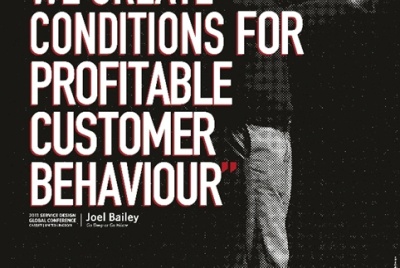Service design – taking the guesswork out of behaviour change
Capita’s Joel Bailey looks at how service design helps improve user experiences.

The core endeavour of service design is to orchestrate user experiences regardless of which channel is used, or what the purpose of engagement with an organisation is.
Expectations for seamless, low-effort user experiences continue to rise as developments in technology infiltrate everyday life and anytime, anywhere, any-channel access becomes the norm.
Pairing user experience with service design creates perfect conditions for influencing profitable user behaviours. Applying a diverse toolbox of design practice including, information, brand, interface UX and, more recently, behavioural design helps customers adopt new behaviours that benefit themselves and the organisation.
I’m often challenged with helping clients achieve tough behaviour-change goals. Whether it is providing guarantees to the BBC to increase TV Licence payments, or supporting O2 to shift customer contact behaviours from the call-centres towards self-service.
The role of service design in these challenges is to identify the barriers holding customers back from the desired behaviour, and design interventions that overcome them. This approach removes a lot of guesswork from the design process.
For example, Capita administers the Teachers’ Pensions scheme, one of the largest pension funds in the UK. One of our core promises was to support an important change in behaviour – encouraging teachers to actively plan for their retirement and understand the value of their pension.
We undertook research into the design of the scheme which revealed a range of barriers to this desired behaviour. The goal of the sign-up process was to complete and close the application, rather than educate individuals; the important messages on the website weren’t easy to find, and the annual statement wasn’t easy to decipher, nor did it encourage individuals to consider their retirement options. This resulted in high-effort customer experiences that didn’t support the desired change in behaviour.
We validated this research through quantitative surveys and data analysis, to the point that the leadership team was confident about the need to invest in a service redesign.
It’s worth breaking out some of the core principles of service design to illustrate the point:
- Co-design – the design work was routinely tested with teachers, employers and staff to ensure it was authentic and valid in its direction – and to ensure it would be used as expected. If something didn’t work, we would tweak it.
- Operational collaboration – the team worked hand-in-hand with operational teams to co-produce the outputs. The human resources team adjusted agent training, the web team re-wrote almost all online content, the call centre team adjusted average handling times to enable new customer conversations. These changes all contributed to the behaviour change.
- Human-centred – the team spent as much time thinking about the irrational and emotional aspects of the customer experience as the practical ones. The seemingly obvious learning that teachers respond better to the concept of ‘retirement’, rather than ‘pensions’, was a key turning point for the design work.
- Governance – the team developed a set of ‘customer promises’, aligned to brand values, to govern every channel and and point of engagement, to overcome the tendency for silos to operate under its own assumptions about what was important to the customer – a factor that often contributed to ‘death by a thousand cuts’.
All of this work addressed that initial goal – to take the guesswork out of behaviour change and encourage teachers to engage more with the pension process.
Service design challenged assumptions about what teachers wanted and believed, and provided evidence that led to a new style of service delivery.
Joel Bailey is director of service design at Capita.
-
Post a comment




